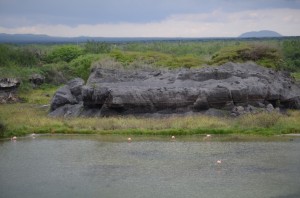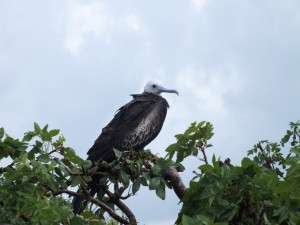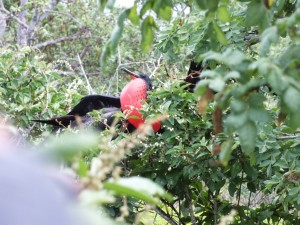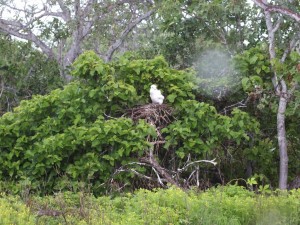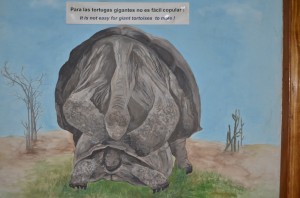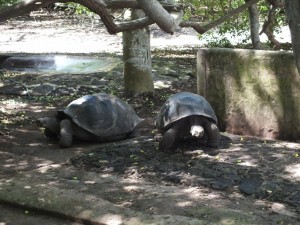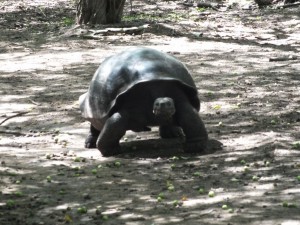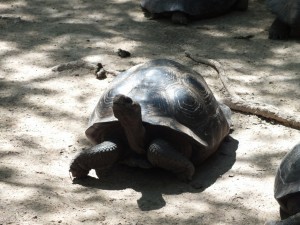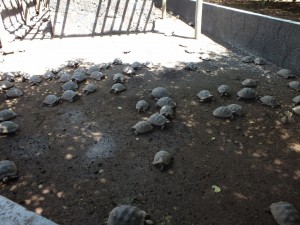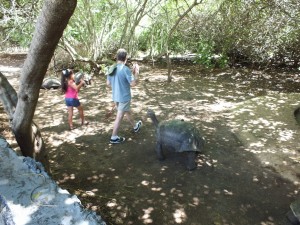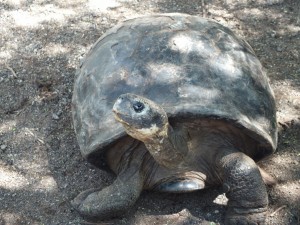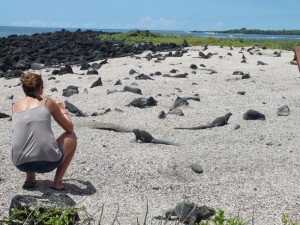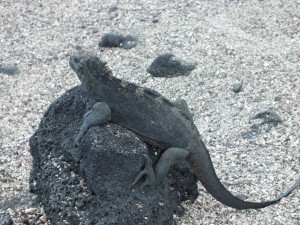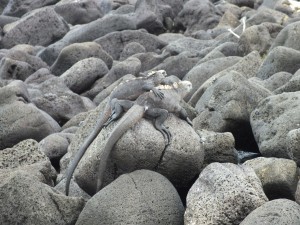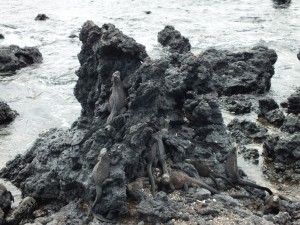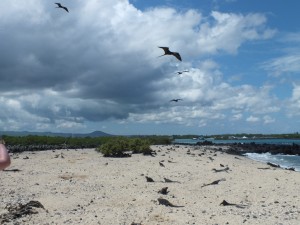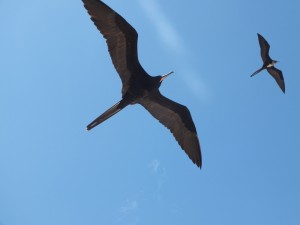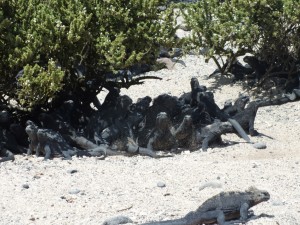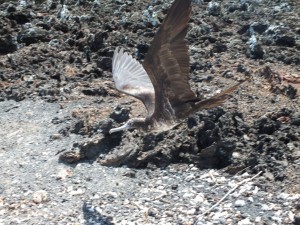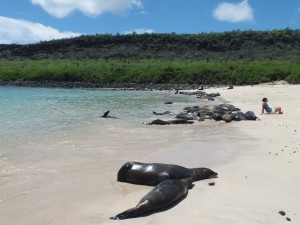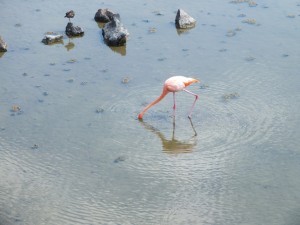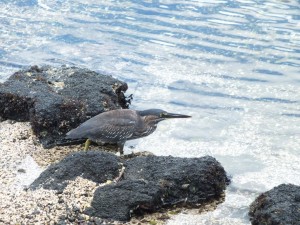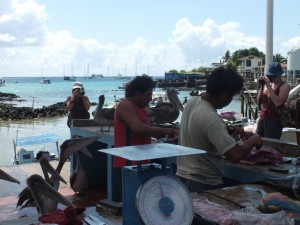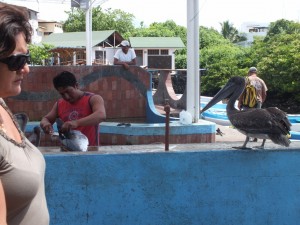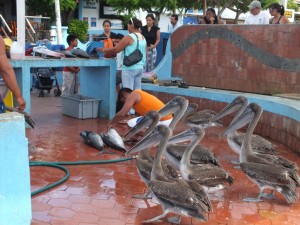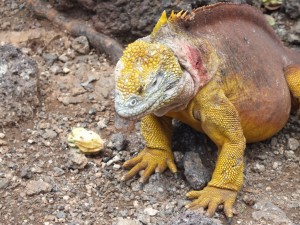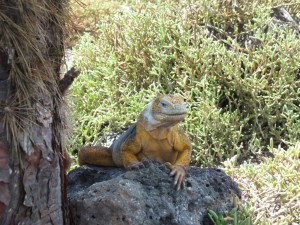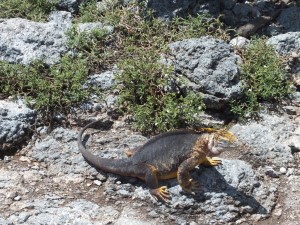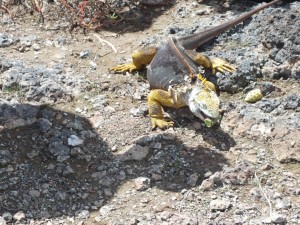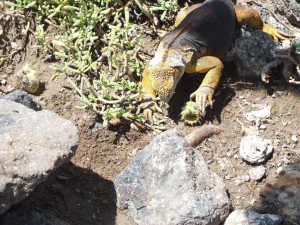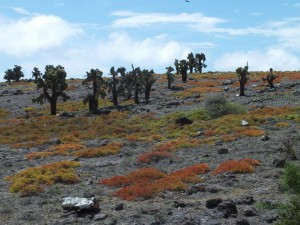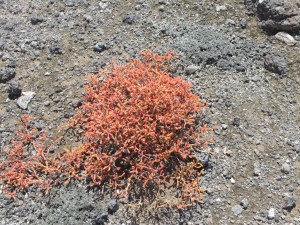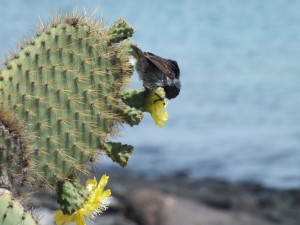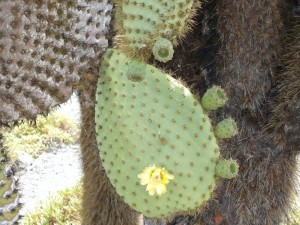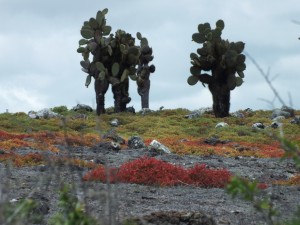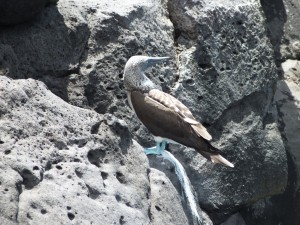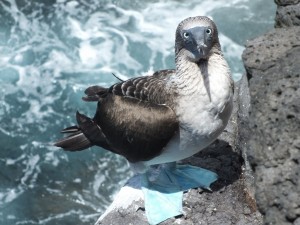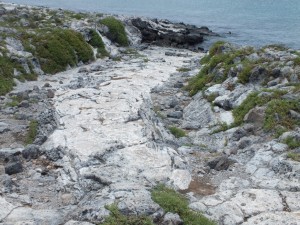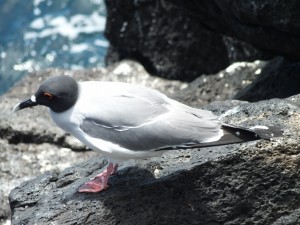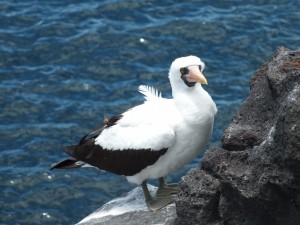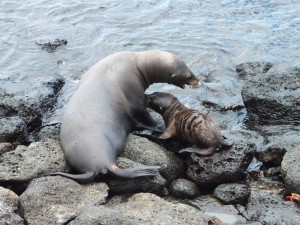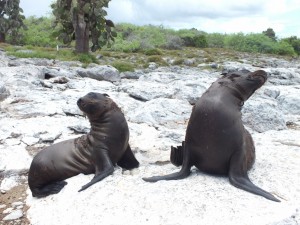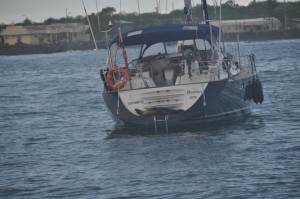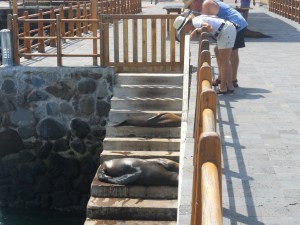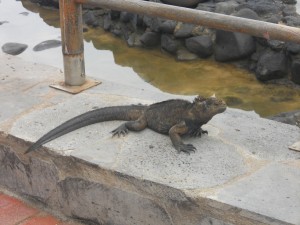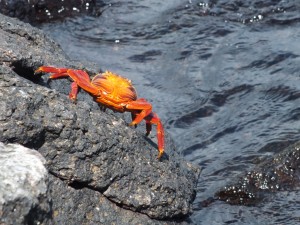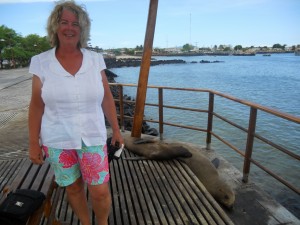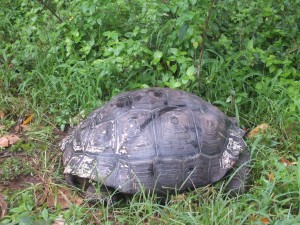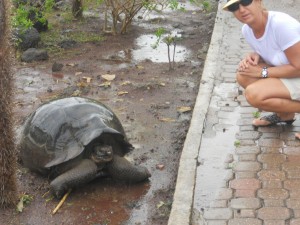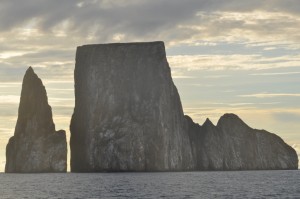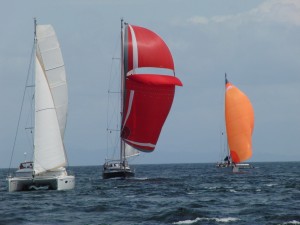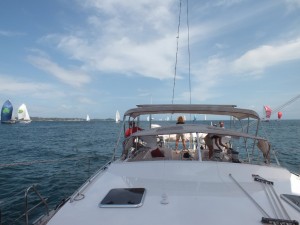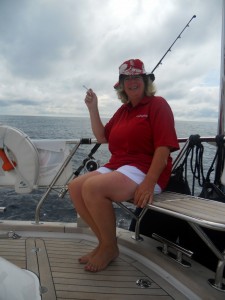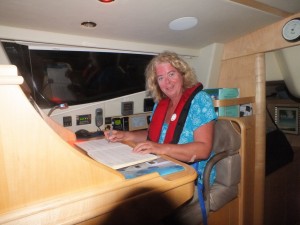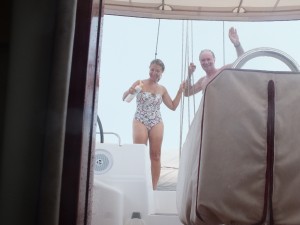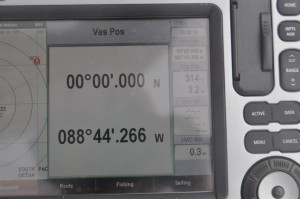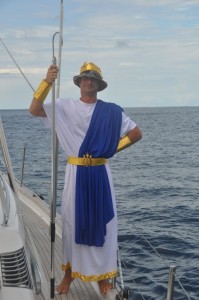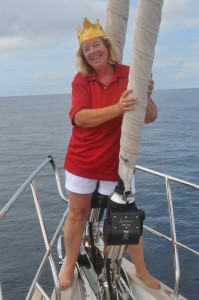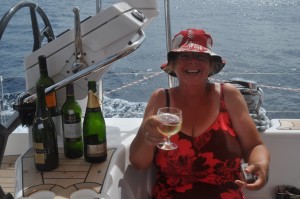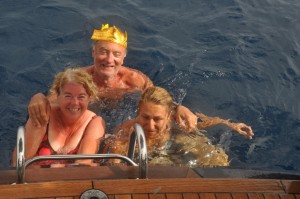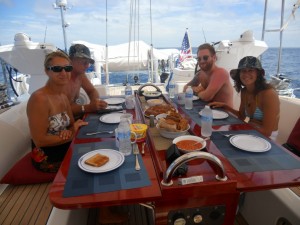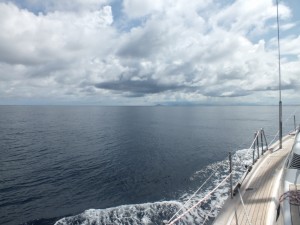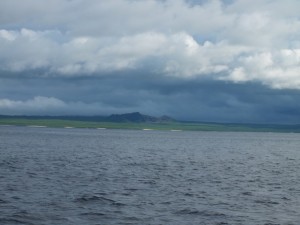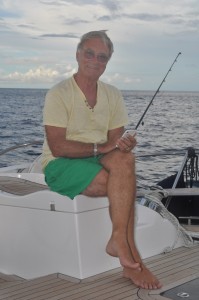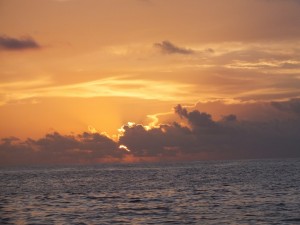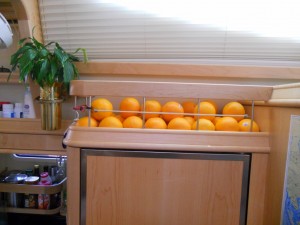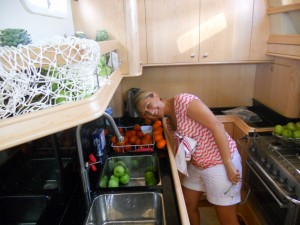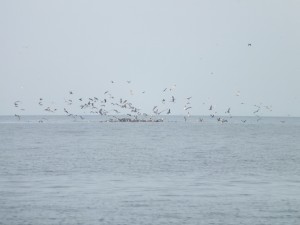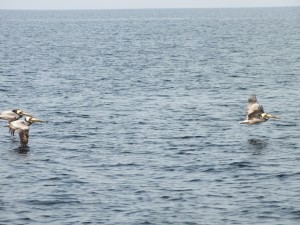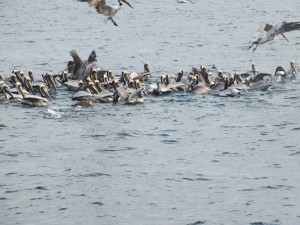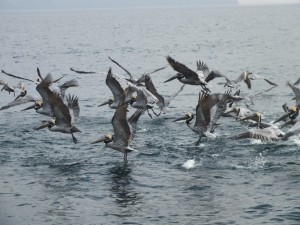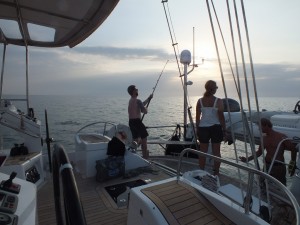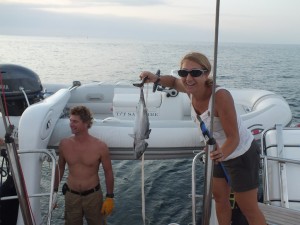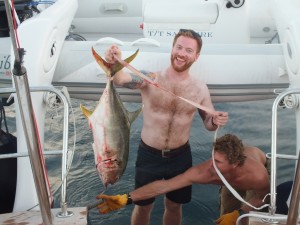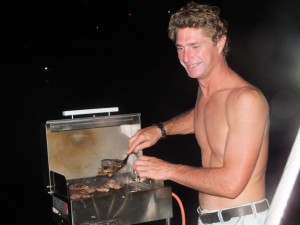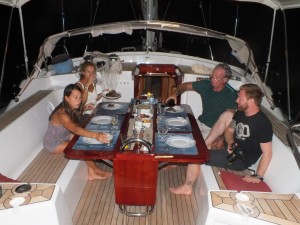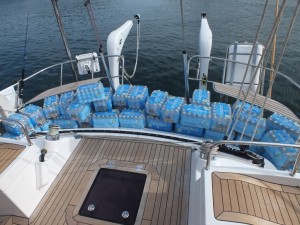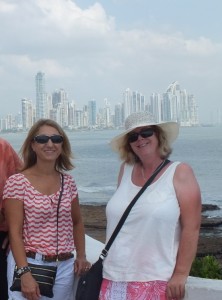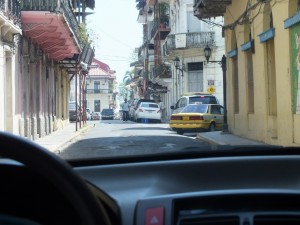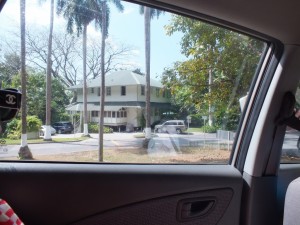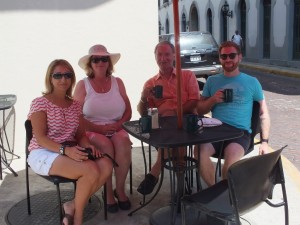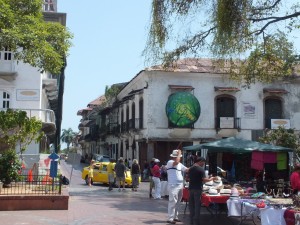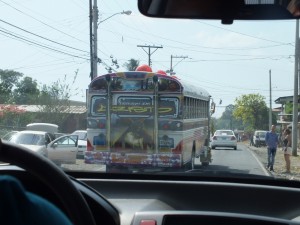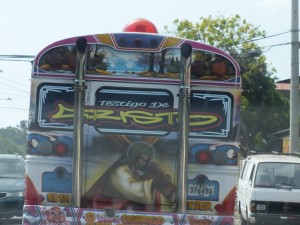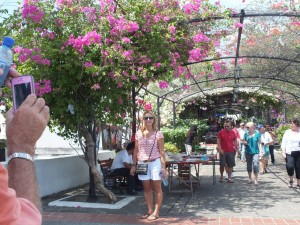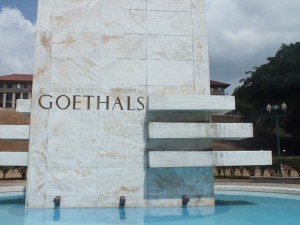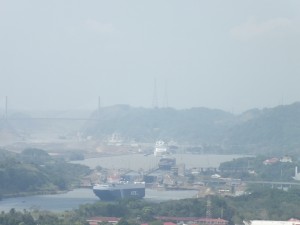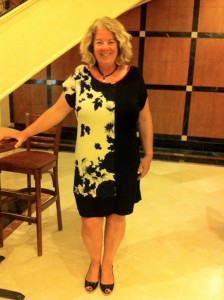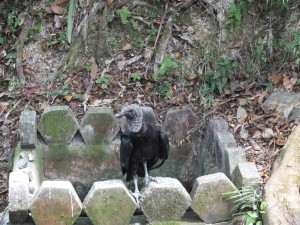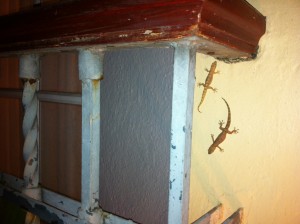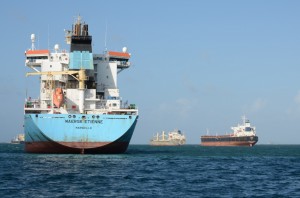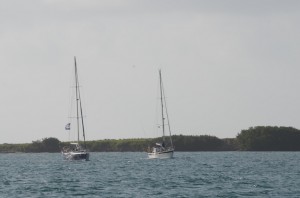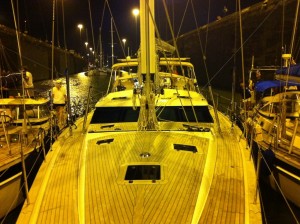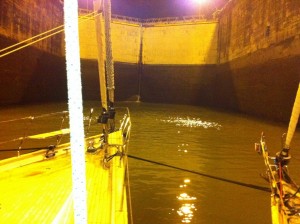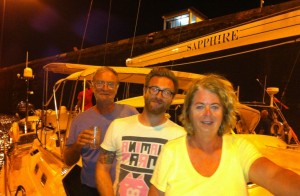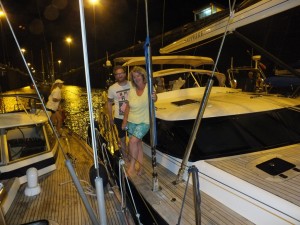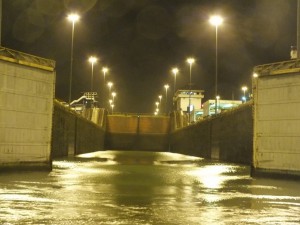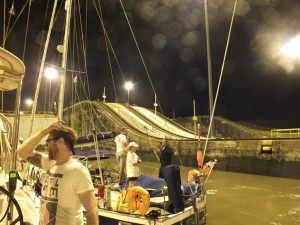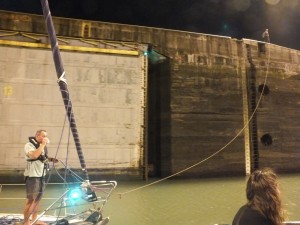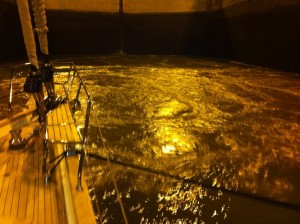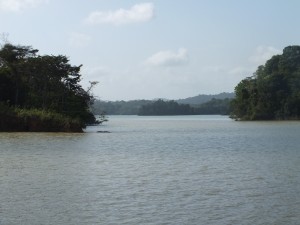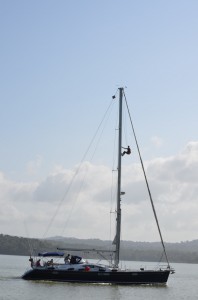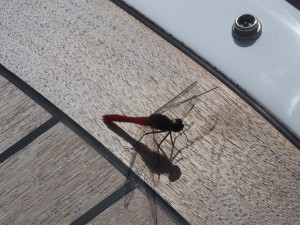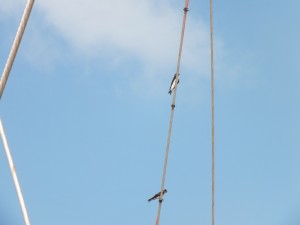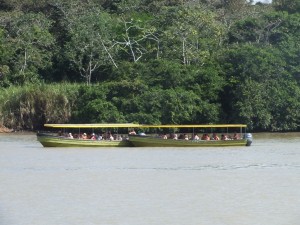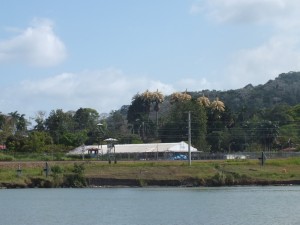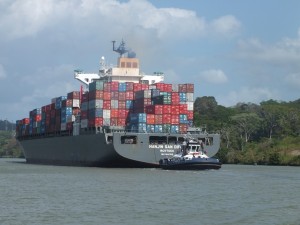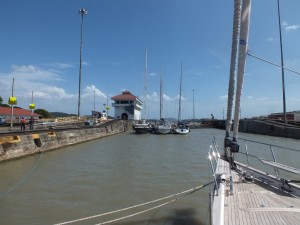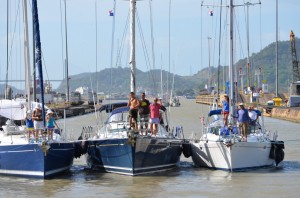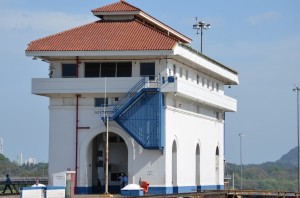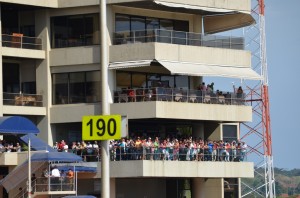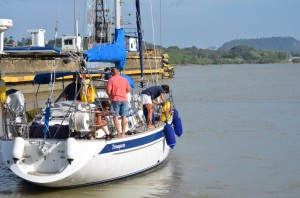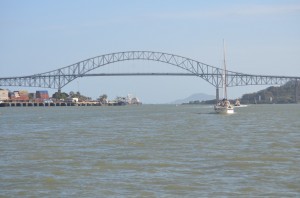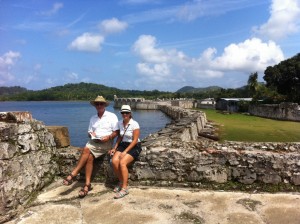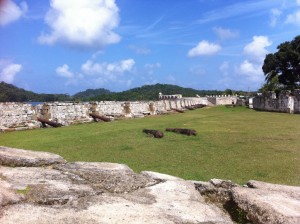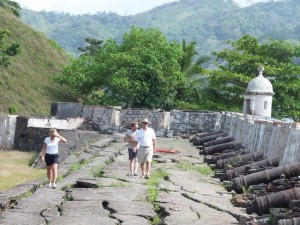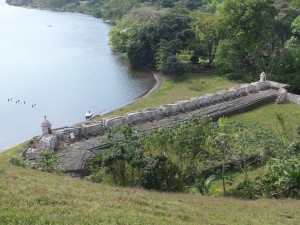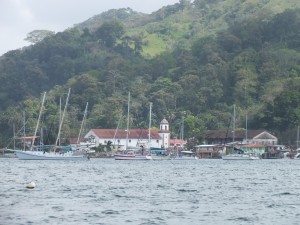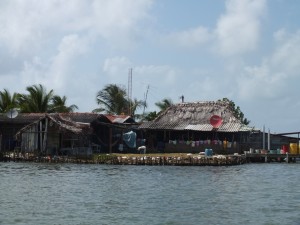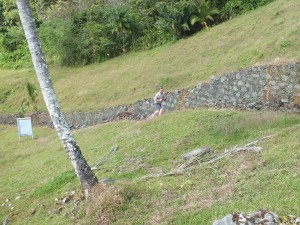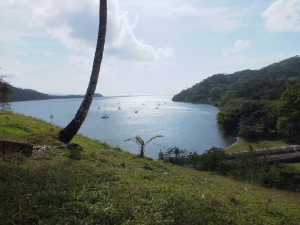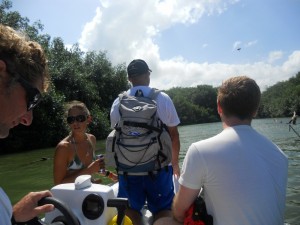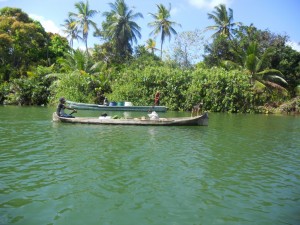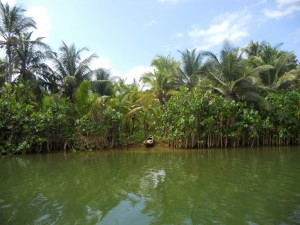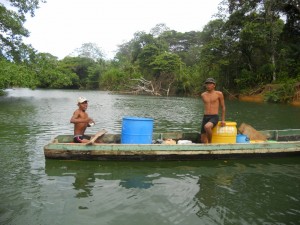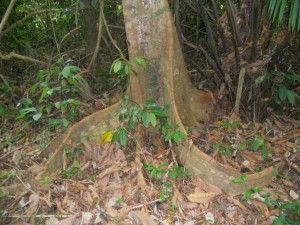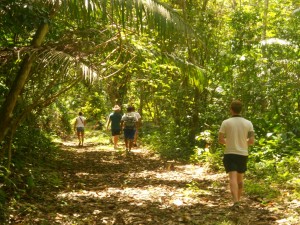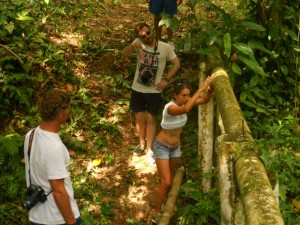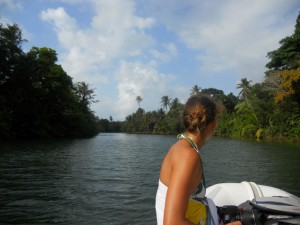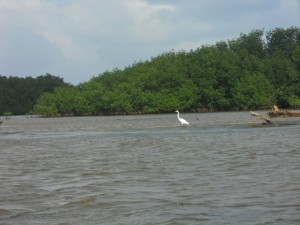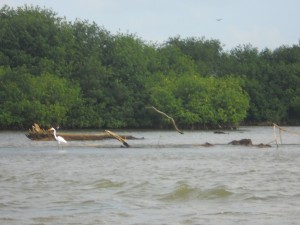Before I tell you about Isla Isabella I must share with you a story I read in the guide book Elaine lent me. Apparently, the first resident of the Galapagos was an Irishman called Patrick Watkins. He was marooned here in 1807 and took to growing vegetables which he then traded for rum with passing ships. (Why didn’t he just get on board one?). Anyway, it seems that after 2 years of this carry-on he stole a ship’s boat – the ones they used to row ashore in – and he and 5 slaves set off for mainland Ecuador. Only Patrick arrived at the mainland and neither hide nor hair was ever found of the slaves. I suspect there was some cannibalism involved!!
Anyway, back to reality. Isabella island is the largest in area and smallest in population of all the Galapagos islands. It is the youngest island by a few million years and has 5 volcanoes, some of which are still active. The main town, Puerto Villamil, amounts to a town square and 3 or 4 sandy streets. This is more what I expected the Galapagos to look like. We had a lot of trouble getting ashore and back as there is only 1 water taxi (finishes at 6pm!!) and the entrance to the harbour is surrounded by reefs. The timing of the tides meant that we were always coming home at night on a low tide, using a torch to pick our way through the rocks. Still, we managed. It’s amazing the trouble you’ll go to, to get ashore, when you know you are about to spend 3 weeks at sea. I completely forgot to take photos of the town. I’m only realising it now and am regretting it.
The sail over from Santa Cruz– well motor actually, no wind – took us 6 hours. On the way we passed a volcanic crater in the sea. Probably the next Galapagos island – if the planet survives our generation’s destruction. Don’t worry – I’m not getting on my hobby-horse – internet time is too expensive. We could clearly see 75% of the crater walls above water so of course we had to sail in. (Pictures of Flamingos not related to the crater – just thrown in cause I like them.)

The first place we visited was a nesting site for Frigate birds. The males build a nest – if it can be called that – sit in it and inflate a red balloon around their throats in an effort to attract females. If a female is suitably impressed, she accepts the male’s nest offering but wisely does it up to a much higher standard before laying any eggs.
(Baby Frigate on the nest. It was lashing rain – again- so got raindrop on the lens. Also couldn´t be bothered zooming in but if you click on the photo you should get a better view)
Next we visited The Wall of Tears. The building of the wall was an exercise in futility and human cruelty that puts me in mind of the famine walls back home. In the 1940’s mainland Ecuador set up a penal colony on Isabella of around 300 prisoners. They were forced to build a wall by stacking huge lava rocks on top of each other and were only given one glass of water per day each. I don’t know how anyone could survive here on 1 glass of water a day never mind those doing hard labour. The wall served no practical purpose. It was just a wall. They say “the strong cried and the weak died”. There was one breakout when 70 prisoners made it to the mainland but all were caught and returned to the island. The prison was finally closed in 1959.
The last trip we made was a trek on horseback to the top of Volcan Sierra Negro. This is an active volcano which last erupted in 2008 and is still smouldering. The horses were the usual trekking types – sure-footed, stubborn, like only one position in the group and will bite the ass of any horse that gets in the way. I was glad of all those horse riding lessons I took when I lived in Belgium, because the guide kept shouting from the back for the horses to gallop and the terrain didn’t lend itself to comfortable galloping. My horse seemed a bit shocked at first that I was able to control him but we quickly came to the understanding that for this day I was the boss.
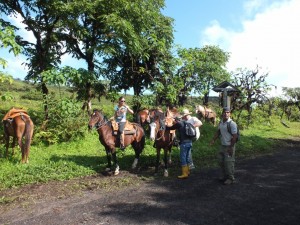
After about 2 hours hard riding we came to the rim of the volcano. We were blown away by the sight. The caldera is 10K in diameter and is still steaming. It is filled with hot rocks and the sulphur can be easily seen. It was impossible to catch on camera so I’ve taken a video. However, for the blog I’ve taken a few and hope you can get a sense of it.
After a leisurely picnic at the top we headed down. We knew this was going to be even trickier than coming up. And of course, as it does every day, it poured down with rain. By now we were so sore, in all sorts of places, that none of us could be bothered getting off the horses, putting on a rain poncho, and getting back on. Too much energy and pain required. So we got soaked. On the other hand the horses loved the cooling rain and with renewed vigour started to tear downwards through rivers of mud. It was an absolutely hair-raising experience. I was so glad to get off the horse that I didn’t care about the fact that I looked and walked like an ancient, bandy-legged cowboy.
Sore bottoms or not, we set sail at 6.30am next morning returning to Santa Cruz. See – its not all fun and games. All the Arc boats are now gathered here in Puerto Ayora. We will fill up with water and fuel, do some pressie shopping, sort out any online stuff that needs to be done, skippers will attend a skippers briefing and all going well we will set off for the Marquesas, in French Polynesia, on Sunday. However, we have had a setback. The impellor on the generator is broken and none of the 6 spares on board, supplied by the boat builders, is the correct size. Luckily our skipper met a mechanic in a hardware shop who sounds like he has a shed similar to Colm´s garage. He had a hunt around and found the part we needed. So now we are just waiting for the extra spares to be shipped here from the US. Seems impellors are always breaking so we need more.
Whenever we do get away, hopefully on Sunday with the rest of the boats, the next leg will be around 3 weeks. 3,000 nautical miles. I’m trying not to think about it too much as to me this is quite a daunting undertaking. 21 days with the same 5 people in a space no bigger than a caravan – a very posh caravan mind you – God knows what weather conditions ahead, beyond helicopter reach. No – best not to think about it. At least I will have 3 weeks without being eaten alive by mosquitoes. They are wrecking my nice tan.
I will be sad to leave the Galapagos. It is an extraordinary place and I’m sure there is still more to see and do. Mind you, we didn’t do too badly. We’ve certainly made the most of our time here. Thanks to John who arranged all our tours. I think we have seen way more than any of the other crews owing to his thirst for new places and experiences. There will be no more blogs from me for a few weeks. The Arc Fleet Viewer will be up from Sunday onwards. So until the Marquesas, adios.

